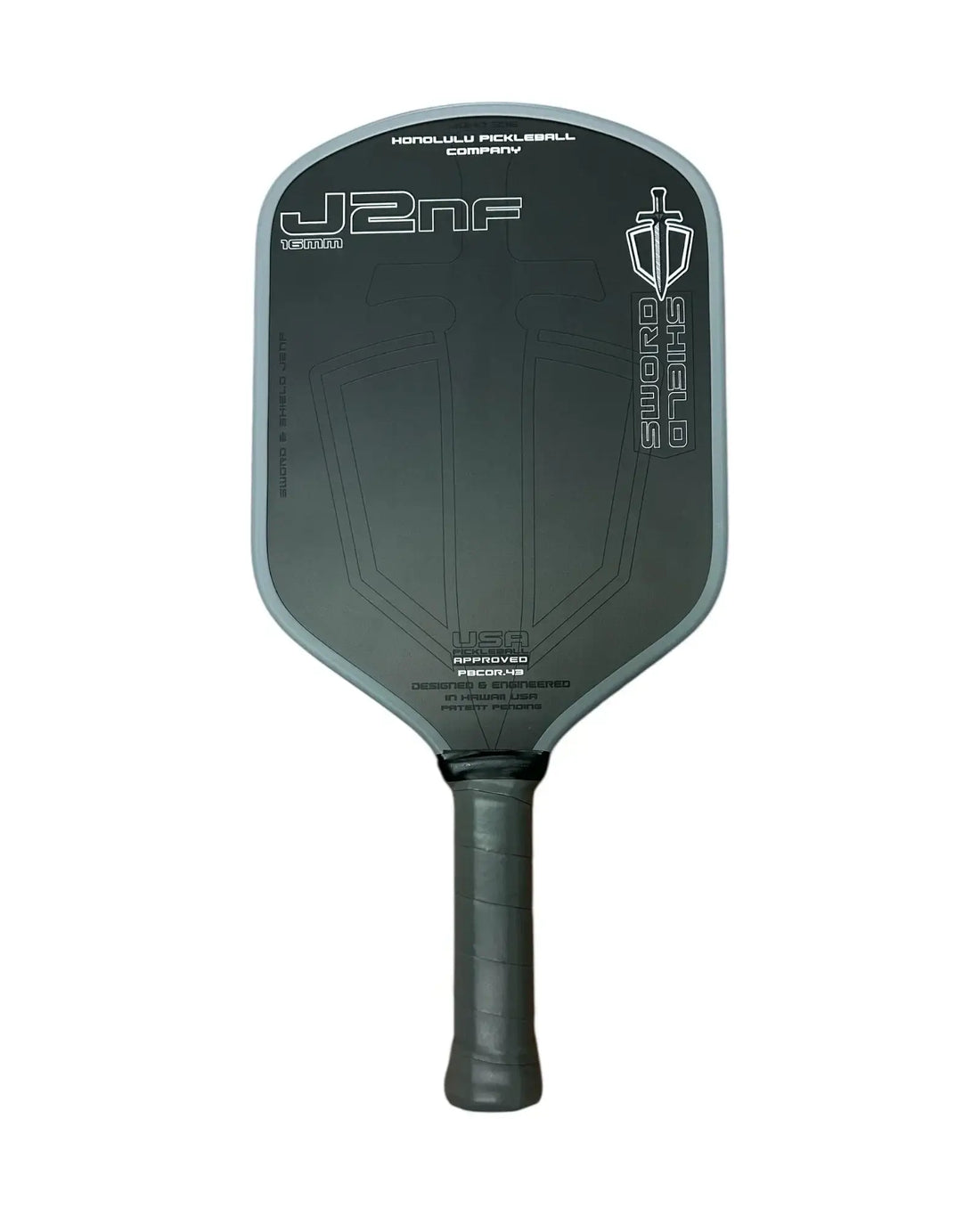
Decoding Honolulu's J2NF, J2NFK, and J2NFT: A Complete Buyer's Guide
The naming system for Honolulu's latest foam paddle lineup can be confusing at first glance, but breaking down these three models by their core characteristics reveals distinct personalities that cater to different playing preferences. The J2NF, J2NFK, and J2NFT all share the same innovative foam core construction and hybrid shape, but their surface materials create notably different playing experiences.
Understanding the Naming System
The confusion around Honolulu's naming comes from their technical approach. All three paddles use the same "NF" (Notched Foam) core technology, with the final letter indicating the face material: J2NF uses carbon fiber and fiberglass, J2NFK features Kevlar (the "K"), and J2NFT incorporates titanium-style PET fibers (the "T"). This systematic approach makes sense once you understand the pattern, but it's admittedly not the most intuitive for buyers.
Core Construction: What They Share
All three paddles utilize Honolulu's Gen 4.5 multi-density foam construction, featuring an EPP foam core interlocked with EVA perimeter foam through a notched system that resembles puzzle pieces. This creates exceptional stability and a massive sweet spot that reviewers consistently praise as among the largest in pickleball. The construction eliminates the traditional honeycomb core entirely, replacing it with foam that provides better durability and consistency over time.
The shared specifications include:
- Weight: 8.0-8.3 oz
- Swing Weight: 110-114 (exceptionally low for a power paddle)
- Twist Weight: 7+ (exceptionally high for stability)
- Dimensions: 16.2" x 7.8" hybrid shape
- Core Thickness: 16mm foam throughout

J2NF: The Carbon Fiber Powerhouse
The J2NF represents the most powerful option in the lineup, featuring a carbon fiber-fiberglass-carbon fiber face layup that creates a crisp, responsive feel. This surface combination delivers the highest power output of the three, with reviewers noting it provides "springy, hollow" characteristics with excellent energy return.
Performance Characteristics:
- Power: Highest of the three models, testing at 0.392 coefficient of restitution
- Feel: Crisp, snappy, and lively with quick energy transfer
- Spin: Excellent at 2270 RPM, ranking in the 77th percentile
- Best For: Players seeking maximum power while maintaining the large sweet spot and stability
The J2NF works particularly well for aggressive players who want to drive balls deep and finish points with authority, while still maintaining touch on softer shots.
J2NFK: The Kevlar Control Specialist
The J2NFK uses DuPont Kevlar aramid fiber, which fundamentally changes the paddle's personality despite sharing the same core. Kevlar's natural dampening properties create a more muted, controlled playing experience that absorbs shock and provides excellent touch on finesse shots.
Performance Characteristics:
- Power: Moderate, with energy building more gradually than the J2NF
- Feel: Dense, plush, and absorbed with excellent stability
- Control: Superior touch and reset capabilities
- Best For: Players prioritizing control, resets, and defensive play
The Kevlar surface excels at taking pace off hard shots and provides more time to shape the ball during dwell, making it ideal for players who prefer strategic placement over pure power.
J2NFT: The Balanced Middle Ground
The J2NFT features a carbon fiber and PET (polyester electroplated fiber) layup, often called "titanium" in marketing materials. This combination creates the softest feel of the three models while maintaining good power output.
Performance Characteristics:
- Power: Moderate, testing at 0.41 PBCoR (slightly lower than the others)
- Feel: Smoothest and most cushioned with the longest dwell time
- Control: Excellent for touch shots and finesse play
- Best For: Players wanting balanced performance with emphasis on feel
Reviewers describe the J2NFT as the "Goldilocks" option—not too powerful, not too controlled, but just right for players seeking a balanced approach.
Durability Considerations
All three models benefit from the foam core construction's durability advantages over traditional Gen 3 paddles. The notched foam system eliminates core crushing issues common in honeycomb designs, and the thermal forming process creates a more stable structure. Multiple reviewers report consistent performance over extended play periods with no significant degradation.
The foam construction also means no break-in period is required—these paddles play consistently from day one and maintain their characteristics over time.
Making Your Choice
Choose the J2NF if you:
- Want maximum power and pop
- Prefer crisp, responsive feedback
- Play an aggressive, attacking style
- Need help getting balls deep in the court
Choose the J2NFK if you:
- Prioritize control and touch
- Play more defensively or strategically
- Want superior reset and blocking capabilities
- Prefer the classic Kevlar feel with enhanced forgiveness
Choose the J2NFT if you:
- Want balanced all-court performance
- Prefer the softest feel with good touch
- Like longer dwell time for shot shaping
- Seek a middle ground between power and control
Value Proposition
At RM855 retail, all three models offer exceptional value in the foam paddle category. The combination of Honolulu's proven hybrid shape, innovative foam construction, and one-year warranty makes these paddles competitive with options costing RM200 - RM300 more from other manufacturers.
The key insight for buyers is understanding that despite similar names and identical cores, these three paddles offer distinctly different playing experiences. The surface material choice fundamentally alters how power is delivered, how the ball feels at contact, and what type of player will find each paddle most suitable. Rather than getting lost in the naming confusion, focus on the feel and power characteristics that match your playing style and preferences.
Additional Reading
For more detailed information about these paddles and the latest reviews, check out these helpful resources:
